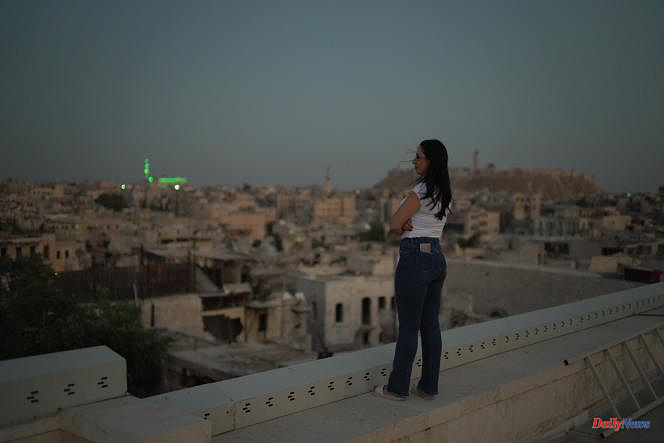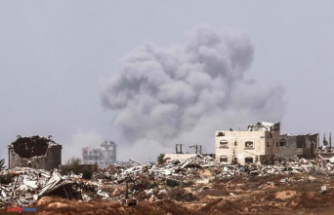On the rooftops of Aleppo, in the darkness of a church, in front of heaps of rubble, Maya Dabbagh sings. Religious songs in Arabic, masses by Mozart, interspersed with vocalizations. The documentary film Noor follows in the footsteps of the young Alépine, soprano of the ecumenical choir Naregatsi. Through music, she exorcised the fear of the war that bloodied Syria's second city between 2012 and 2016. The daily life has been on hold since, and a harsh economic crisis is raging: she finds in singing the impetus to continue.
Filmed in 2018 and 2022, Noor recounts the capsized daily life of Maya, the friendships that the 30-year-old forged in the choir founded by a now deceased priest, and her dreams of an operatic career. The camera takes us to the phantom ruins of Homs, deserted even by birds, to those of Aleppo, a city that has become unrecognizable to its inhabitants, or to roads where the Syrian flag flaps near portraits of Bashar Al-Assad.
Throughout the film, Maya expresses her love for Aleppo. The city was divided for four years between loyalist neighborhoods and rebel suburbs. The reconstruction remained a mirage, with rare exceptions: the Maronite cathedral, which we see gutted at the beginning of the film, following the fighting, is restored in 2022. As her sisters and friends leave, Maya refuses to leave Aleppo.
A major exodus
More than 6 million Syrians have gone into exile since the 2011 uprising, which was harshly repressed by the power of Bashar Al-Assad. A major exodus, which upset the social fabric. It affects all communities: only about 20% of Christians in Aleppo - the environment in which the documentary evolves - are said to be still there.
The film strays, however, when it moves away from the human aspect put forward to speak, furtively, of politics: it rewrites history, attributing the destruction of Aleppo exclusively to jihadist groups, including the presence was not continuous in the insurgent zone, "dislodged" by the Syrian and Russian armies. The pro-regime forces are exempt from the relentless shelling of the former rebel side. Failing to restore the complexity of what took place in Aleppo, it would have needed contextual subtitles in counterpoint to these few partisan sentences. This also applies to Homs.
But Noor opens a window on the Syrians who remained in loyalist territory, who have been little heard of, in their fears during the war and in their despair today in a country on its knees. The image suggests that culture can bring together a battered and divided people. From the citadel of Aleppo, Maya and her friends sing, with visitors, a song made famous by the tenor Sabah Fakhri, who died in 2021. Its tunes are synonymous, for many Syrians, with immense nostalgia.












